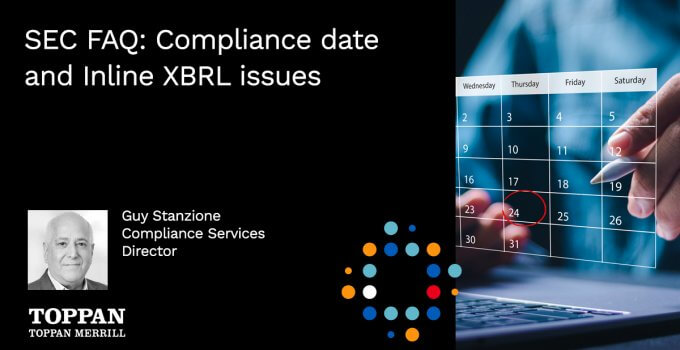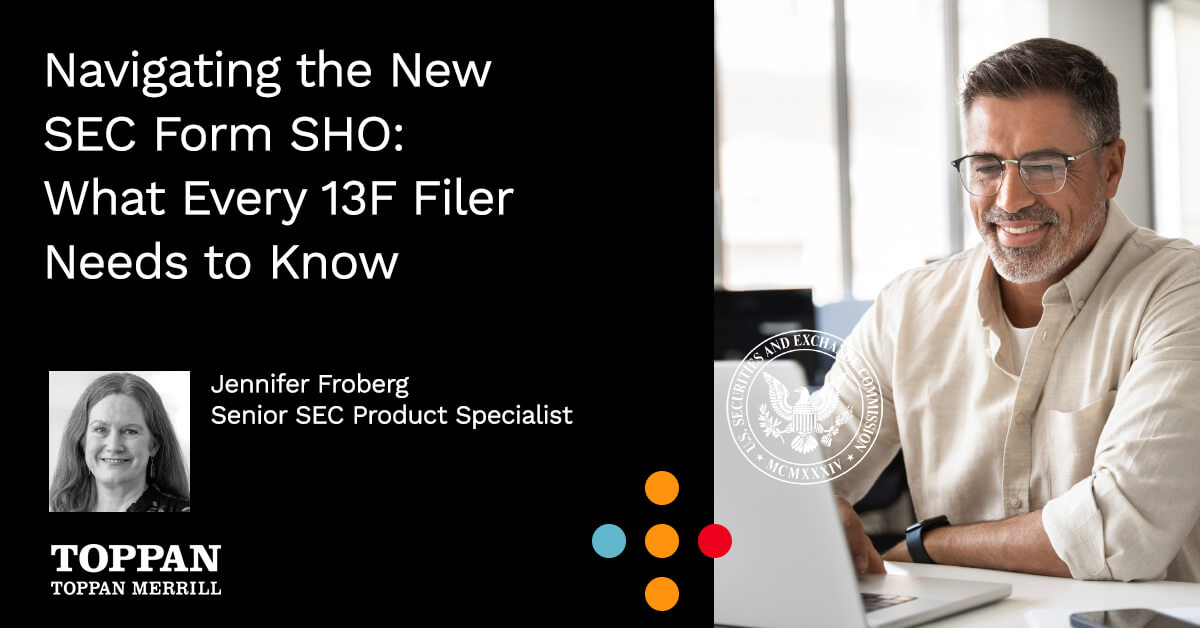The Adopting Release states that all shareholder reports for funds registered on Form N-1A must comply with the new amendments if they are transmitted to shareholders on or after the July 24, 2024 compliance date.
For funds with May 31st period end shareholder reports, there is a growing interest to complete their shareholder report production cycle in order to delay the transition to TSR and take advantage of one more cycle utilizing Rule 30e-3.
The SEC has clarified that if a fund’s shareholder report is transmitted to shareholders prior to the compliance date, but the Form N-CSR is filed after the compliance date, the new Tailored Shareholder Report would not need to be included in the EDGAR filing on Form N-CSR.
In the January FAQ posted by the Staff, it was stated, “Item 1 of Form N-CSR requires funds to include a copy of the annual report that was transmitted to shareholders pursuant to rule 30e-1. Therefore, consistent with this requirement, funds should include the report that was actually transmitted to shareholders, regardless of whether Form N-CSR is filed before or after the compliance date”.
Complexity to the SEC filing process for TSRs
The introduction of XBRL for the TSRs and the need to transform the balance of the N-CSR primary document to xhtml, the version of html required for XBRL filings, has created additional complexity to the SEC filing process. Adding to the complexity is the workflow path chosen by the Fund Administrators. With a large percentage of the fund industry choosing Fund Administrators to provide TSR document creation and XBRL services, there are items to be considered:
- Fund Administrator scope of services:
- What are the services offered
- How to “fill the gaps” for services not being provided by the administrator
- Workflow variations based on administrator and services offered
Concerns and challenges with N-CSR filings
Larger fund complexes are oftentimes managing their funds through multiple Fund Administrators. Although prior to TSR this hasn’t posed a problem, the added complexity brought on by XBRL has caused concern within the industry. A filing containing XBRL tagged content can only have one XBRL file within the filing, which means if an N-CSR contains funds supported by different Fund Administrators, the XBRL will have to be assembled as one file in order to file with the SEC. This will require an unprecedented collaboration between administrators.
Concerns such as:
- Accurate assembly of TSRs into one XBRL “package” for multi class/multi fund filings
- Accurate assembly of TSRs supported by multiple administrators into one XBRL “package”
- Review of html to ensure all data is present, especially charts and graphs
- “Hidden text” data for charts, such as a Growth of $10,000 chart
Other elements adding to the complexity of N-CSR filings are:
- Where the N-CSR components are “coming from”?
- N-CSR Cover
- Document Entity Information (DEI) content will need to be tagged and assembled with the TSRs to minimize filing warnings for hidden facts
- TSRs
- XBRL tagging using multiple taxonomies – OEF and GAAP
- N-CSR
- Items 2 to 6
- Item 7 (7a/7b) – Financial Statements/SOIs/Financial Highlights
- Items 8 to 18
- Exhibits
- The transformation of the N-CSR primary document from html to xhtml, with the exhibits remaining in html
- N-CSR Cover
- Additional time required to create and review XBRL tagging
- Review of content and taxonomy elements
- Understanding multiple taxonomies (OEF and GAAP) and the tags to be applied
- Creation of multiple required outputs
- Complete N-CSR for SEC filing
- Items 7 to 11 for web hosting
How to meet compliance and Inline XBRL challenges
A well thought out plan is essential to successfully meet compliance requirements.
The Staff provided guidance that the requirement to XBRL tag shareholder reports would only be effective once the fund begins using the TSR.
In their response to the question:
“On what date will tailored shareholder reports be required to be tagged using the OEF taxonomy? Would any tailored shareholder report that will be filed on Form N-CSR on or after the compliance date of July 24, 2024 be required to be tagged using Inline XBRL”?
By responding, that the contents of shareholder reports included in Form N-CSR that are transmitted to shareholders on or after July 24, 2024 must be tagged using Inline XBRL, they confirmed that as long as the shareholder report was transmitted prior to the compliance date and a TSR was not distributed, XBRL would not be required since there are no XBRL elements applicable to the existing shareholder report.
The Open-End Fund (OEF) taxonomy was created for tagging required elements of the TSR, but was extended to include Risk Return Summaries for Open-End fund prospectuses. The taxonomy, which will be required for TSRs as of the compliance date, is currently optional for Risk Return Summary filings. The creation of a taxonomy for Open-End funds appears to be following the trend of recent 1940 Act XBRL taxonomies, aligning with lines of business. For example, the Closed-End Fund (CEF) taxonomy for N-2 filers and Variable Insurance Products (VIP) taxonomy for N-4 and N-6 filers.
Although the Risk Return taxonomy is still available, following existing SEC standards of allowing use of the current taxonomy and one version back, we can anticipate the Risk Return taxonomy will no longer be available when the next version of the OEF taxonomy is released, which should be as early as 2025. Although not required, it’s a good idea for filing agents and filers to begin the transition to: (1) become familiar with the taxonomy and (2) utilize the same taxonomy for prospectus and shareholder report filings.
How TSR compliance is different from prospectuses
The SEC is applying a different approach to TSRs than has been in place for prospectuses. Currently when a prospectus is amended or supplemented, and the changes impact Items 2 to 4 of the Statutory Prospectus, only the content that is changing needs to be tagged and refiled in XBRL.
When an issuer submits an amended Form N-CSR, and the originally filed Form N-CSR included multiple TSRs in Item 1 of the form, but the issuer is amending only one element in the TSR that is required to be tagged, the SEC feels it would be reasonable in their view for the Form N-CSR/A filing to include a complete version of the amended tailored shareholder report, with all elements of that shareholder report, not only those elements that have been amended, XBRL tagged. SEC Investment Company taxonomies can be found at https://www.sec.gov/data-research/standard-taxonomies/investment-companies
Simplify SEC compliance with expertise from Toppan Merrill
Toppan Merrill has helped organizations with their required financial reporting and compliance requirements for decades. Our experts are up to date on SEC modernization and formatting requirements, including for Tailored Shareholder Reports and Inline XBRL, and we are in constant contact with SEC officials for rules clarification to ensure full compliance for our clients.
For simple, straightforward solutions, or for assistance with the Tailored Shareholder Report rule and Inline XBRL, Toppan Merrill is ready to help. Contact us today or call 800.688.4400.



